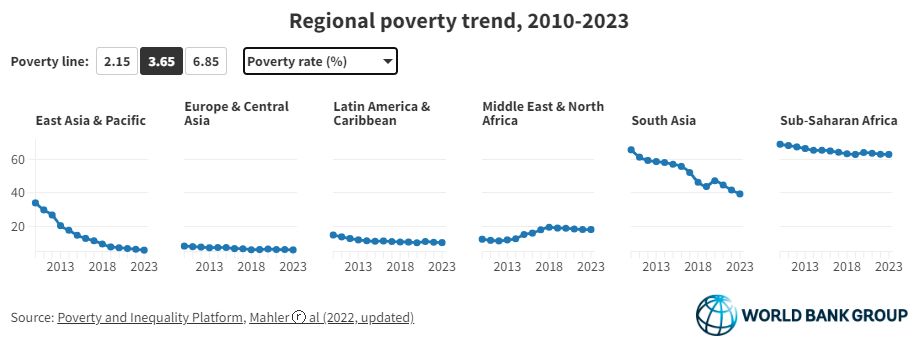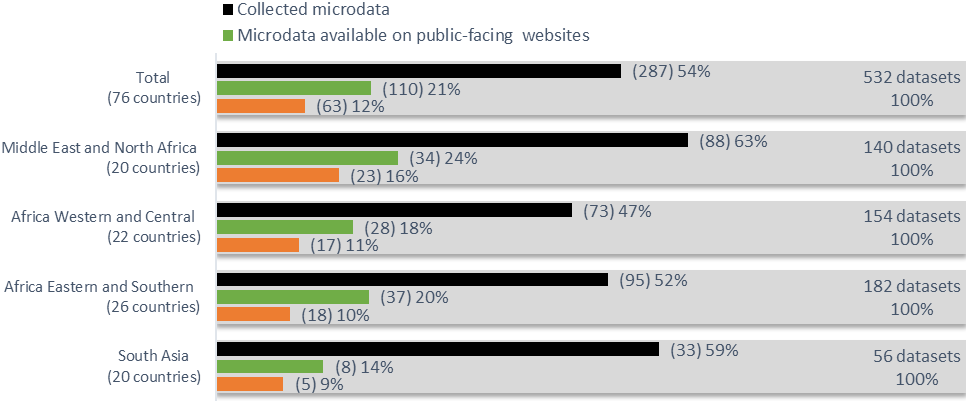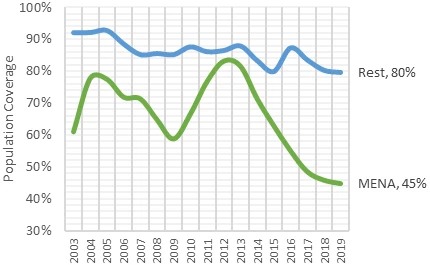 صبي يقف بجانب الخبز في مصنع، القاهرة، مصر. (Shutterstock.com/Dietmar Temps)
صبي يقف بجانب الخبز في مصنع، القاهرة، مصر. (Shutterstock.com/Dietmar Temps)
As we marked World Poverty Day on October 17th, a blog published recently by World Bank staff highlights that poverty has finally receded to pre-COVID pandemic levels, which in essence means we have lost three years in the global fight against poverty. The recent World Bank blog is based on a meticulous analysis of survey data in the World Bank’s Poverty and Inequality Platform (PIP). This interactive web-based tool offers users quick access to data on poverty trends from a database comprising 2,200 household surveys from over 160 economics across the world, up from the 36 countries in one of the earliest such analyses published by the Bank in 1979.
The snapshot for countries in the Middle East and North Africa (MENA) region in the mentioned blog is sobering: geographic disaggregation of these trends reveals a significant uptick in poverty in MENA based on all three international poverty lines the Bank uses to track global poverty. As shown below, MENA is the only region across the world where poverty ($3.65 line) has increased over the past decade, from an estimated 12.3% in 2010 to 18.1% in 2023.

Useful as they may be, it is important to keep in mind that such aggregate estimates are at best indicative of broad trends. Having a depth of data at the country level is key to understanding trends and drivers of poverty in specific country contexts, which in turn is key for designing effective policies and programs to reduce poverty.
In MENA, household survey coverage went down from 82% in 2012 to 45% in 2019 (see below for latest available data for MENA countries); for recent years, MENA estimates are derived using projections based on pre-2020 surveys. In line with the modest recovery in per-capita GDP, poverty at the regional level is estimated to have declined slowly during the post-pandemic period.
| In MENA, population coverage of publicly available household surveys has fallen below 50% |
Latest household surveys for MENA for which data are available in the PIP |
||||||||||||||||||||||||
| |
|
Careful country analysis is key to examining poverty at the disaggregated level. Recent economic activity has been adversely affected in most countries of the region by overlapping shocks and macroeconomic and structural challenges with inflation in double digits in a few MENA countries. (Macro-Poverty Outlook, October 2023).
The World Bank has been working closely with different stakeholders in the region to analyze available microdata and inform the design of social mitigation packages, including the expansion of cash transfer programs across the country. This analysis has been helpful not just to draw attention to vulnerable population segments that may otherwise have been excluded from the various measures under consideration, but also to assess the efficiency and sustainability of the compensatory response.
As the 2021 World Development Report: Data for Better Lives has highlighted, governments can realize enormous economic and social value from data through concerted efforts to transform it into information and draw valuable insights to design, implement, and guide policies to improve people’s lives. In MENA, however, much of this potential remains untapped. A recent assessment by the World Bank of microdata availability [(i) establishment, (ii) consumption-poverty, (iii) labor force and (iv) health surveys, (v) population and (vi) economic censuses, and (vii) price data] shows some progress, but still significant room for improvement: overall, about 63% such data are collected in MENA (88 out of 140 data sets), higher than in other African countries and South Asia, but only 24% are available publicly, and only 16% through National Statistical Offices’ websites.

24% of Assessed Microdata Publicly Available online in MENA Region
The World Bank’s latest MENA Economic Update has estimate that the macroeconomic shocks of 2020-22 led to an additional 5.1 million individuals becoming unemployed in MENA. Unemployment can have long lasting repercussions on poverty, and access to more and better jobs for people will be critical for the poor in MENA.
Better public access to high-quality economic and social data is equally indispensable to inform and guide the policies and programs to reduce poverty and build the foundations for sustainable development.





Join the Conversation